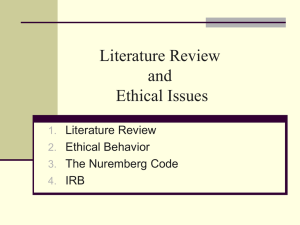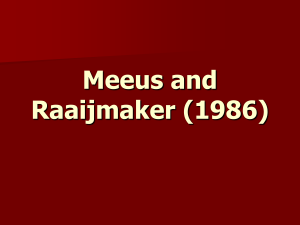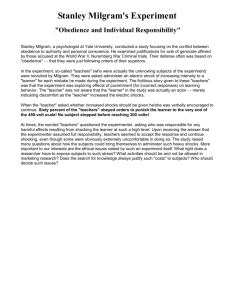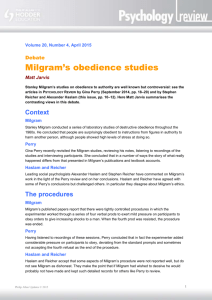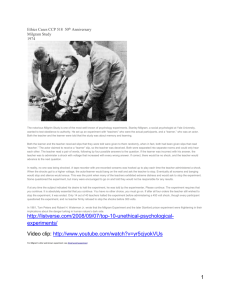Phuc NguyenPHI 337
advertisement
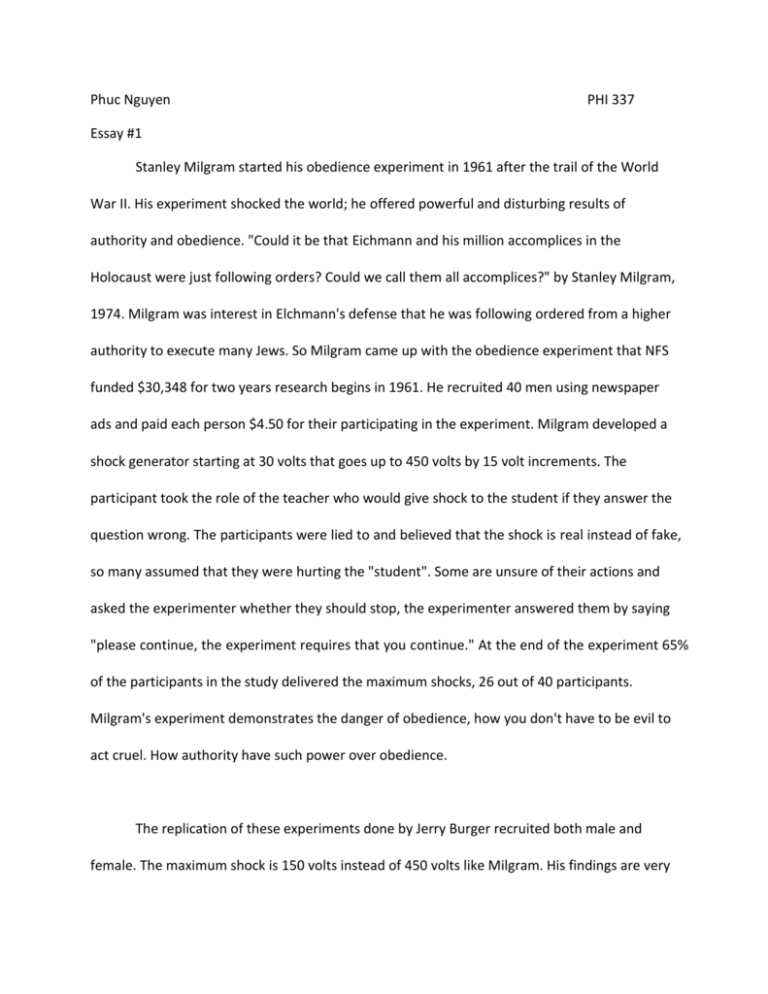
Phuc Nguyen PHI 337 Essay #1 Stanley Milgram started his obedience experiment in 1961 after the trail of the World War II. His experiment shocked the world; he offered powerful and disturbing results of authority and obedience. "Could it be that Eichmann and his million accomplices in the Holocaust were just following orders? Could we call them all accomplices?" by Stanley Milgram, 1974. Milgram was interest in Elchmann's defense that he was following ordered from a higher authority to execute many Jews. So Milgram came up with the obedience experiment that NFS funded $30,348 for two years research begins in 1961. He recruited 40 men using newspaper ads and paid each person $4.50 for their participating in the experiment. Milgram developed a shock generator starting at 30 volts that goes up to 450 volts by 15 volt increments. The participant took the role of the teacher who would give shock to the student if they answer the question wrong. The participants were lied to and believed that the shock is real instead of fake, so many assumed that they were hurting the "student". Some are unsure of their actions and asked the experimenter whether they should stop, the experimenter answered them by saying "please continue, the experiment requires that you continue." At the end of the experiment 65% of the participants in the study delivered the maximum shocks, 26 out of 40 participants. Milgram's experiment demonstrates the danger of obedience, how you don't have to be evil to act cruel. How authority have such power over obedience. The replication of these experiments done by Jerry Burger recruited both male and female. The maximum shock is 150 volts instead of 450 volts like Milgram. His findings are very similar to Milgram how humans have a propensity a sense of obedience to authority. He also found that there are no significant differences between male and female participants. There are many differences between these two experiments such as the Milgram's experiments only consisted of male but Burger included both sexes. Burger has informed consent form while Milgram just deceived his participants. Milgram also pushed his participants while Burger offered a modest refusal condition to withdraw the experiment whenever. Burger also used a two-step screening to eliminate those who might experience negative reaction such as vulnerability to the experiment. Under Belmont Report Milgram's experiment is considered as unethical in many ways. Milgram's experiment did not respect the participants because they didn't give all of the necessary information to the participants. Without that information the participants didn't have full autonomy when they made the decision to be a part of the experiment or not. Milgram's experiments didn't have much benefit to society as a whole, also some participants experienced anxiety and stress. Even though the participants were debriefed at the end of the experiment about the purposed and deception many participants were still confused. This showed that Milgram's experiments lack the ability to informed and debrief in a correct and orderly manner follow up. The harm outweighed the benefit in the experiment making it unethical. The risks and benefits didn't distributed justly because only white males are participants in this experiment. Overall Milgram's experiments are considered as unethical under Belmont Report. Under the Belmont Report Burger's experiments is considered ethical in a sense. First Burger's experiments did have respect for persons who are involved in the experiments by providing informed consent form. He let them aware of the contents of the experiments. Also giving the participant the ability to end earlier by modest refusal condition is also respecting the participants. Having women and men in the experiments showed justice under Belmont Report. The bad consequences are much lower than Milgram's experiments. Overall Burger's experiments are considered ethical.
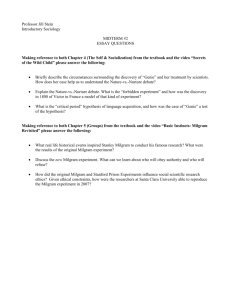
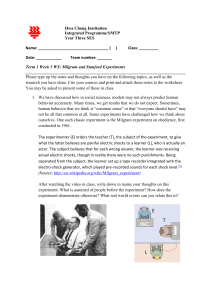
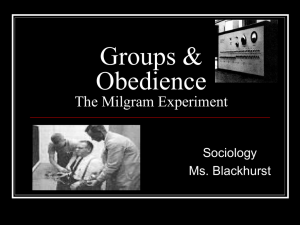
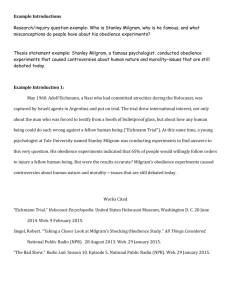
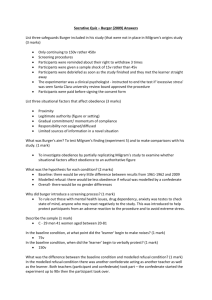
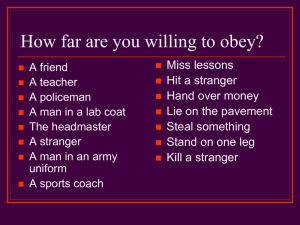
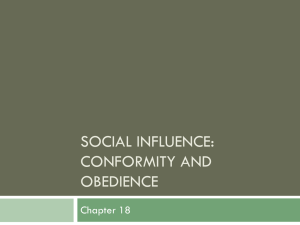
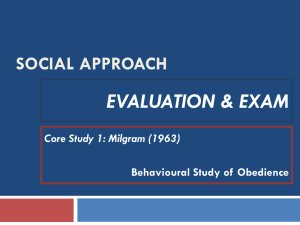
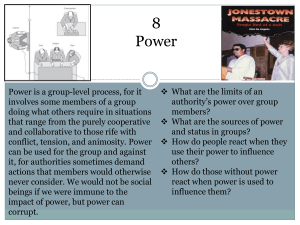
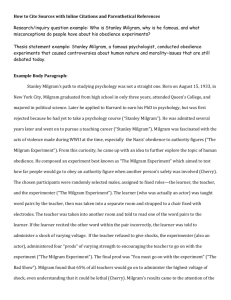
![milgram[1].](http://s2.studylib.net/store/data/005452941_1-ff2d7fd220b66c9ac44050e2aa493bc7-300x300.png)
